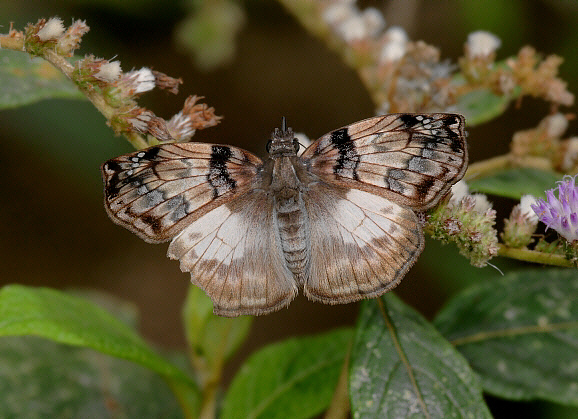
Introduction
The Pyrginae, popularly known as Flats or Spreadwings, are a cosmopolitan subfamily distributed across temperate and tropical habitats throughout the world. In the Americas there are 990 species.
The genus Mylon contains 15 known species, all with the same characteristic wing shape and pale greyish-white ground colour. Some species like pelopidas are faintly marked, while others are quite heavily marbled with dark brown.
Mylon zephus is distributed from Colombia and Venezuela to southern Peru.
Habitats
This species occurs in rainforest and cloudforest habitats at elevations between about 400-2000m on the eastern slopes of the Andes.
Lifecycle
The lifecycle appears to be unrecorded. Generally, Pyrgine butterflies lay their eggs singly on either the upperside or underside of leaves. The larvae are typically dull green or brownish, with thin longitudinal lines along the back and sides, and with black shiny heads. They feed typically on herbaceous plants, but a small percentage feed on the leaves of bushes or trees. The pupae are usually dark and smooth, with the wing cases in a contrasting tone or colour. They are normally formed within silken tents formed by spinning together the leaves of the foodplant.
Adult behaviour
In cloudy conditions the butterflies fly in open areas along roadsides, nectaring at flowers of various species. In hot and sunny conditions the males settle on the ground to imbibe moisture from the edges of puddles and ditches.
